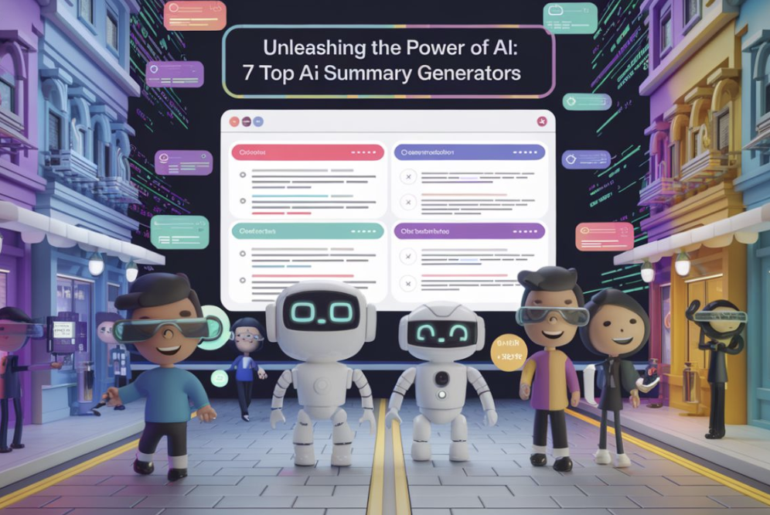As a tech media writer, I’ve witnessed firsthand the transformative power of artificial intelligence across various industries. From automating mundane tasks to unlocking creative potential, AI is reshaping the way we work, learn, and interact with information. One area where AI shines particularly bright is text summarization. The sheer volume of information we encounter daily can be overwhelming. Sifting through lengthy articles, reports, and research papers to extract the core message is a time-consuming process. This is where AI-powered summary generators step in, offering a lifeline in the age of information overload.
This comprehensive guide will explore the fascinating world of summary generators, delving into their functionalities, benefits, and the diverse landscape of available tools. I’ll share my personal experiences, insights, and examples to provide a vivid and engaging overview of this rapidly evolving technology.
The Need for Speed: Why Summary Generator Matters
In today’s fast-paced world, time is a precious commodity. We’re constantly bombarded with information from various sources, and the ability to quickly grasp the essence of a text is crucial. Think about it: how many times have you skimmed an article or skipped a lengthy report simply because you didn’t have the time to read it in its entirety?
- Information Overload: We live in an era of information overload. Summary generators help us cut through the noise and focus on the key takeaways.
- Time Efficiency: Summarizing lengthy documents manually can take hours. AI-powered tools can condense information in seconds, freeing up valuable time.
- Improved Comprehension: Concise summaries can enhance understanding, especially for complex or technical topics.
- Enhanced Productivity: Researchers, students, and professionals can leverage summarization tools to boost productivity and streamline their workflows.
My own experience as a tech writer underscores the importance of efficient summarization. When researching new technologies or preparing for interviews, I often encounter a mountain of information. Summary generators have become an indispensable tool in my arsenal, allowing me to quickly digest key concepts and identify relevant insights.
Exploring the Landscape: A Comparative Analysis of Summary Generators
The market is brimming with a diverse range of summary generators, each with its own strengths and weaknesses. Let’s take a closer look at some of the leading contenders:
Monica AI Summary Generator:

Monica, a versatile AI assistant, offers a powerful summarization tool that supports a wide array of formats, including text, URLs, documents, PDFs, web pages, images, and even YouTube videos. Its multilingual support (over 100 languages) is particularly impressive. As a user of Monica for other tasks, I appreciate the seamless integration of the summarization feature within the broader platform.
Example: AI Ethics Research Paper Summary and Translation
When handling a complex research paper on AI ethics, Monica utilized AI PDF Translator and Summary Generator tools.
- AI PDF Translator: Quickly translated the paper’s PDF into Chinese.
- Summary Generator: Extracted key points and generated a concise summary.
I received the paper’s Chinese translation and a clear summary, saving me significant reading time.
Paraphraser.io Text Summarizer:
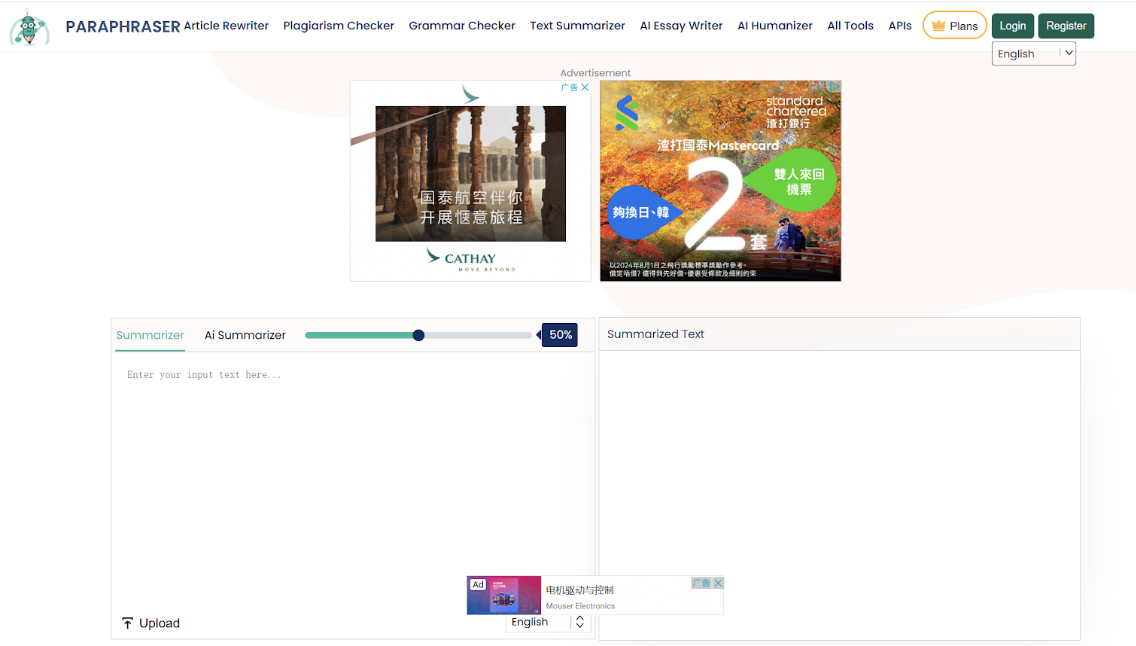
This tool focuses on simplicity and ease of use. While its language support is more limited (8 languages), it provides a quick and efficient way to summarize text, articles, and research papers. The text ranking feature is a useful addition for identifying the most important sentences.
Example: Summarizing a news article about the latest tech trends. Paraphraser.io quickly generated a concise summary highlighting the key developments.
Ahrefs Free AI Summarizer Tool:
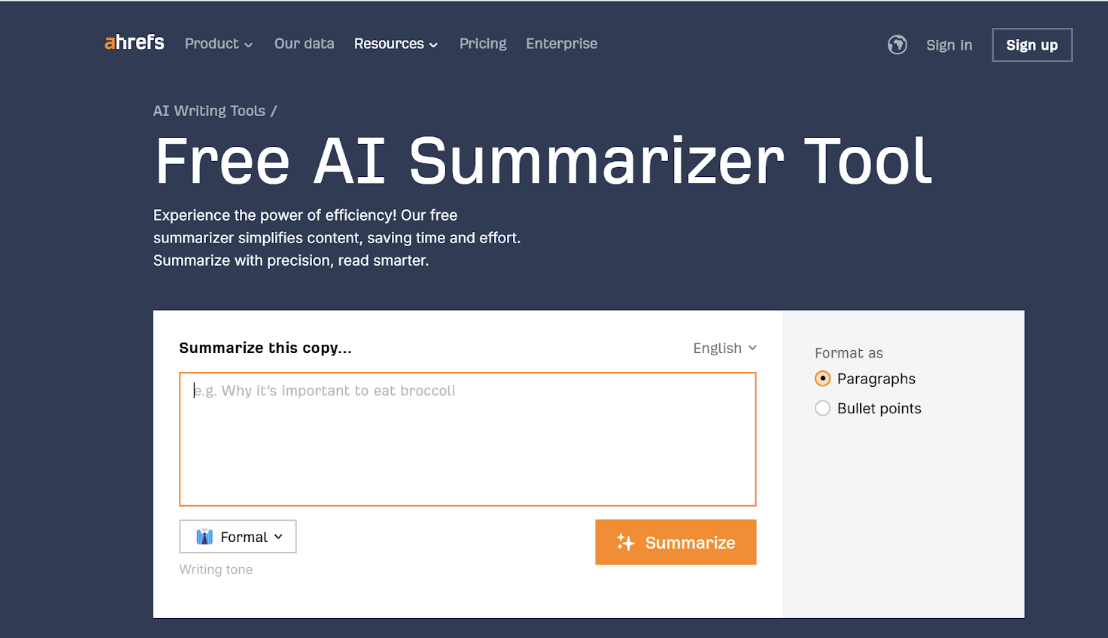
Ahrefs, known for its SEO tools, also offers a free summarizer that handles both text and URLs. Its simplicity makes it a good option for quick summarization tasks.
Example: Summarizing a blog post about content marketing strategies. Ahrefs quickly extracted the main points, providing a helpful overview.
Scribbr Free Text Summarizer:
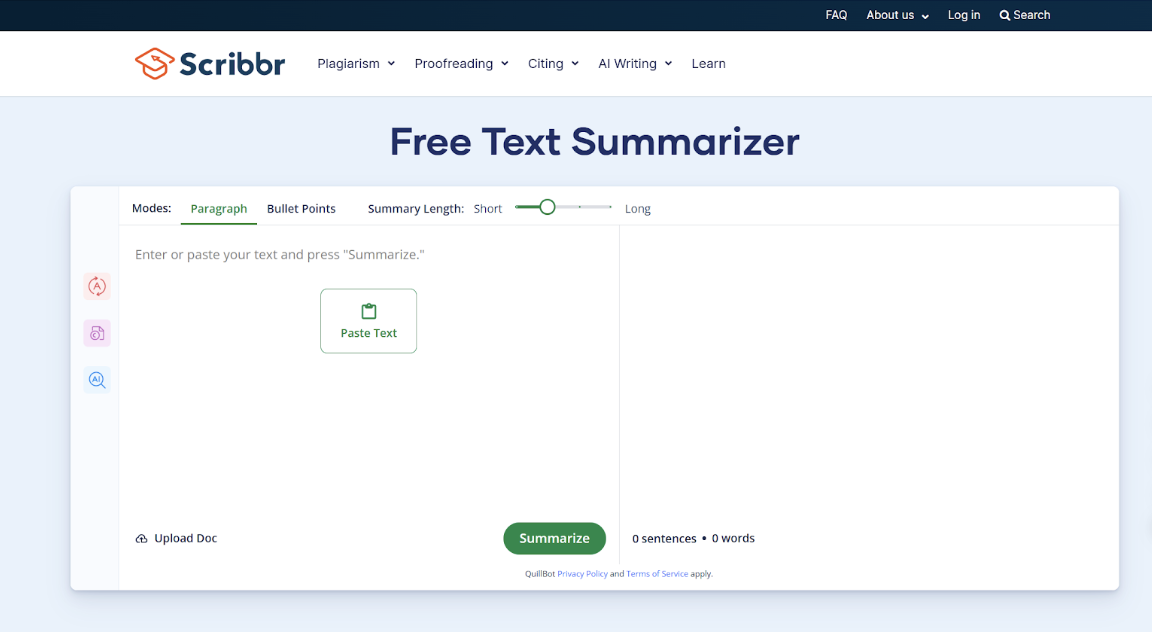
This free tool is geared towards students and researchers, offering a straightforward way to summarize text, URLs, documents, and PDFs. Its emphasis on privacy (no data storage) is a welcome feature.
Example: Summarizing a chapter from a textbook on economics. Scribbr efficiently condensed the key concepts into a manageable summary.
Editpad Text Summarizer:
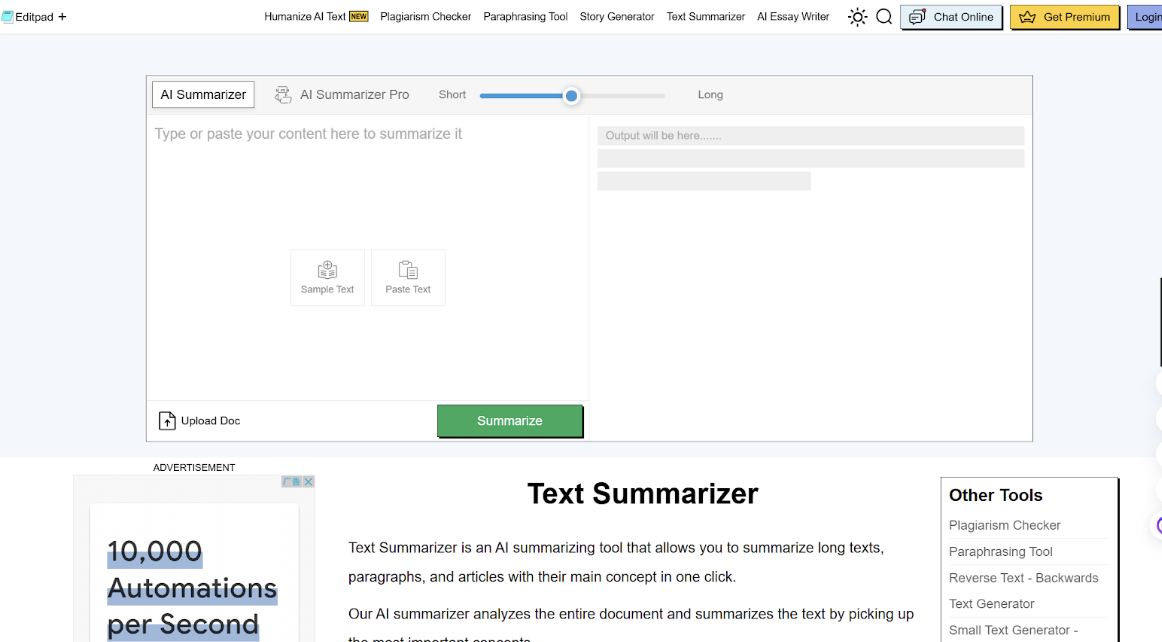
This tool offers both free and premium options, providing flexibility for different user needs. Its multilingual support and ability to handle various formats make it a versatile choice.
Example: Summarizing a lengthy legal document. Editpad effectively extracted the key clauses and provisions, simplifying the complex language.
Grammarly AI Summary Generator:

Known for its grammar and writing assistance, Grammarly also offers an AI-powered summarization tool. Its integration with the Grammarly platform provides a seamless writing and editing experience.
Example: Summarizing a draft of a marketing report. Grammarly’s summarization tool helped me refine the key messages and ensure clarity.
Summarizer.org AI Summarizer:
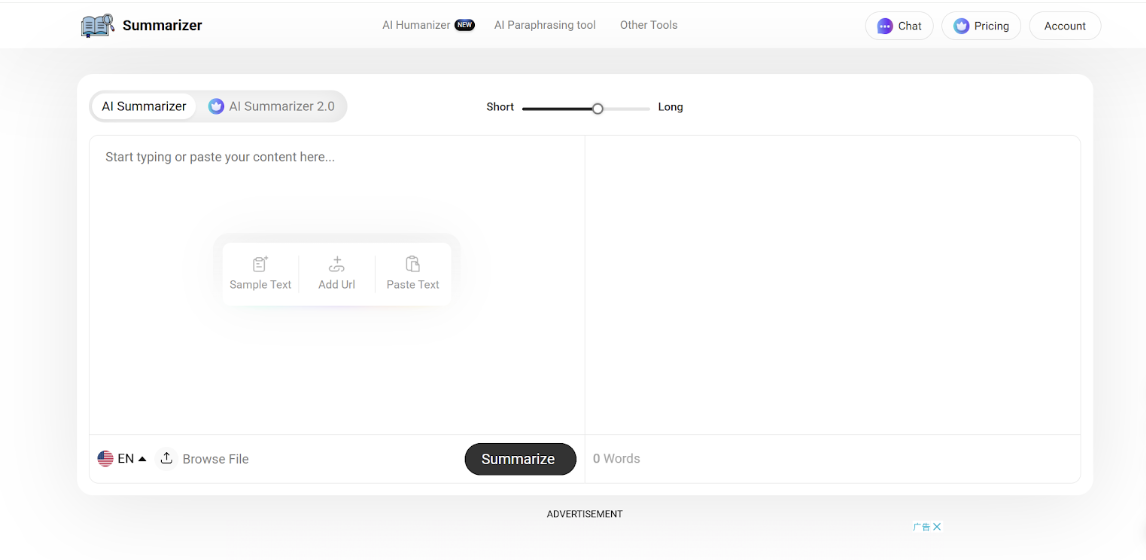 This tool offers a comprehensive suite of summarization features, supporting a wide range of formats and languages. The combination of free and premium options caters to diverse user needs.
This tool offers a comprehensive suite of summarization features, supporting a wide range of formats and languages. The combination of free and premium options caters to diverse user needs.
Example: Summarizing a YouTube video transcript on the future of artificial intelligence. Summarizer effectively condensed the key insights from the video.
Choosing the Right Tool: A Practical Guide
Selecting the right AI summarization tool can be a straightforward process when you focus on the key factors that matter most:
Your specific needs: Consider the type of content you need to summarize, whether you require a PDF translation, the length of the documents, and the level of detail necessary. For instance, Monica excels in handling diverse content types and delivering summaries tailored to varying levels of detail, making it a strong contender for your requirements.
Features: Evaluate whether you need advanced functionalities like abstractive summarization, personalized summaries, or real-time summarization. Monica’s advanced features, including its ability to generate personalized summaries, make it an ideal choice for users seeking cutting-edge capabilities.
Pricing: Decide if you prefer a free tool or are willing to invest in premium features. Monica offers flexible pricing plans, ensuring both affordability and value for premium users.
Ease of use: Assess the user-friendliness of the interface. Monica stands out with its intuitive design, making it simple to upload documents and customize settings, even for beginners.
Security and privacy: Ensure the tool handles your data securely and respects your privacy. Monica prioritizes data security, providing peace of mind for users who value confidentiality.
By focusing on these factors and recognizing the advantages Monica brings to the table, you can confidently choose a tool that aligns with your needs and maximizes the potential of AI summarization.
Beyond the Basics: Advanced Features and Future Trends
The field of AI summarization is constantly evolving. We’re seeing exciting advancements in areas like:
Abstractive Summarization: Moving beyond simply extracting key sentences, abstractive summarization involves paraphrasing and generating new text that captures the essence of the original content. This is a more complex task, requiring a deeper understanding of language and context.
Personalized Summarization: Tailoring summaries to individual user preferences and needs. This could involve focusing on specific topics, adjusting the summary length, or even adapting the writing style.
Real-time Summarization: Generating summaries of live events, such as meetings or conferences, allowing participants to quickly grasp key takeaways.
These advancements promise to make AI summarization even more powerful and impactful in the years to come.
FAQ
What is AI summarization? AI summarization uses algorithms to condense large texts into shorter, coherent summaries.
How accurate are AI summarizers? Accuracy depends on the tool and the complexity of the text. While they are constantly improving, they may not always capture every nuance.
Can AI summarizers replace human writers? While they are powerful tools, AI summarizers are best viewed as assistants, not replacements. Human writers still play a crucial role in crafting nuanced and engaging content.
What are the ethical considerations of using AI summarization? It’s important to use these tools responsibly, ensuring proper attribution and avoiding plagiarism.
Become an Insider

Subscribe to get a free daily budget planner printable to help get your money on track!
Make passive money the right way. No spam.
Source Citation References:
+ Inspo
